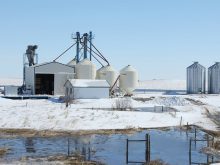Q: My husband has an extreme sensitivity to almost every-thing he inhales. Do you think cauterization of his nasal passages would alleviate the problem? He sneezes frequently and phlegm builds up, runs down his throat making him cough and spit up constantly. Allergy tests show he is allergic to a few grasses. I believe he must be allergic to many more things as he sneezes and coughs in all situations.
A: Your husband may be allergic to more than grasses. It depends what the doctor tested him for. Inside the house, he may be allergic to cats, dogs or feathers as well as the most common culprit, the dust mite.
Read Also

Growing crops for fuel comes with challenges
Crops for sustainable aviation fuel will be the subject of much debate. Where to plant them, will farmers invest in them and how food and fuel prices will be impacted must be discussed.
After a period of time, sufferers from respiratory allergies develop abnormalities in the lining of the nasal passages. At first the lining becomes bluish and swollen and eventually polyps may develop. They can arise from any part of the nasal lining or from the sinuses. They are associated with any condition that causes chronic inflammation of the nasal cavity.
Allergic rhinitis, which is what your husband suffers from, is one of the most common causes, but children who develop multiple polyps should be tested for cystic fibrosis or asthma. This conditions account for up to 50 percent of all cases. Alcohol or Aspirin intolerance are other common causes.
Another condition that involves nasal polyposis is Young’s syndrome. In this rare disease, the nasal polyps are related to chronic sinusitis and infertility in males.
An MRI or CT scan can help to diagnose nasal polyps, but often all that is required is a good physical examination, preferably by an ear, nose and throat specialist. Many people live with polyps without major problems, but large ones can block the nose, forcing the individual to breathe through his mouth. They can also reduce one’s sense of smell.
The best way to deal with large nasal polyps is surgical removal, although corticosteroid drops and nasal sprays such as Nasocort can shrink small ones. The cauterization that you suggest is usually used for treatment of nosebleeds, but will not help with the chronic allergies and postnasal drip that your husband appears to have.
I suggest your husband visit the specialist and ask if he thinks that nonsurgical methods are appropriate in this case. If he feels that allergies are the main culprits without polyps being present, then he may suggest a nasal spray or a series of desensitization injections for the allergies. This might be a problem if, as you indicated, there are multiple allergens involved. Even after surgical removal with a telescopic device known as an endoscope, polyps can return if the allergies are still present. However, this may not happen for many years, and they can simply be removed again.
There are some complications of surgery including bleeding from the nose and sometimes into surrounding tissues, causing black eyes. Nasal polyps that are just in the nose are less of a problem to remove than those that invade the sinus cavities.
Clare Rowson is a medical doctor with a practice near Belleville, Ont. Her columns are intended for general information only. Individuals are encouraged to also seek the advice of their own doctor regarding medical questions and treatments.














